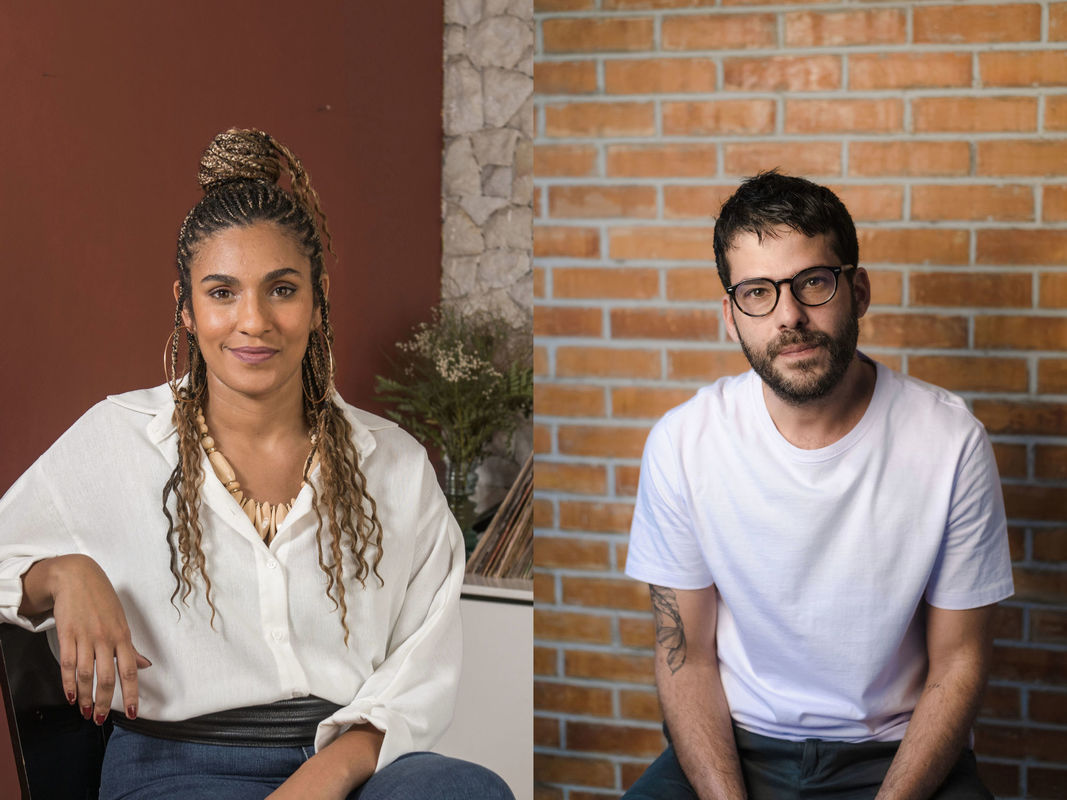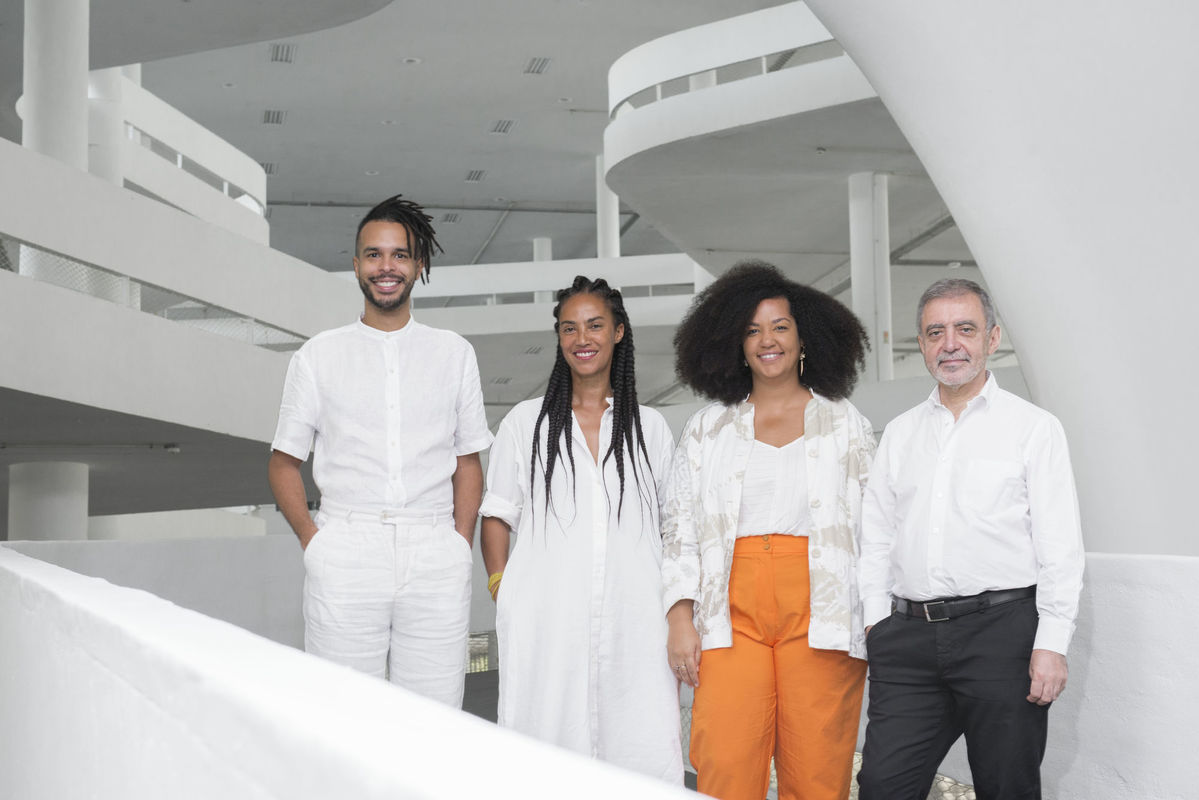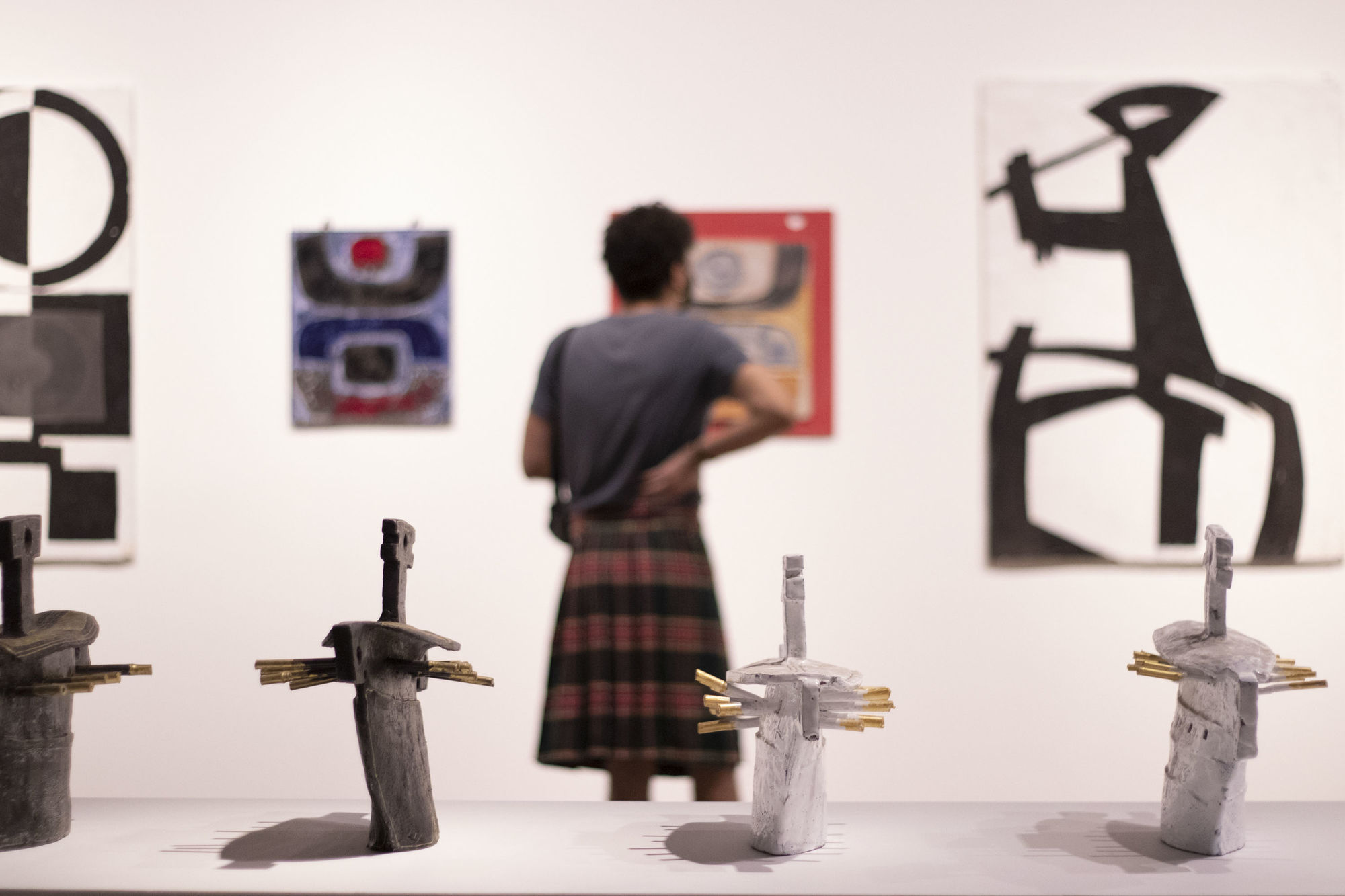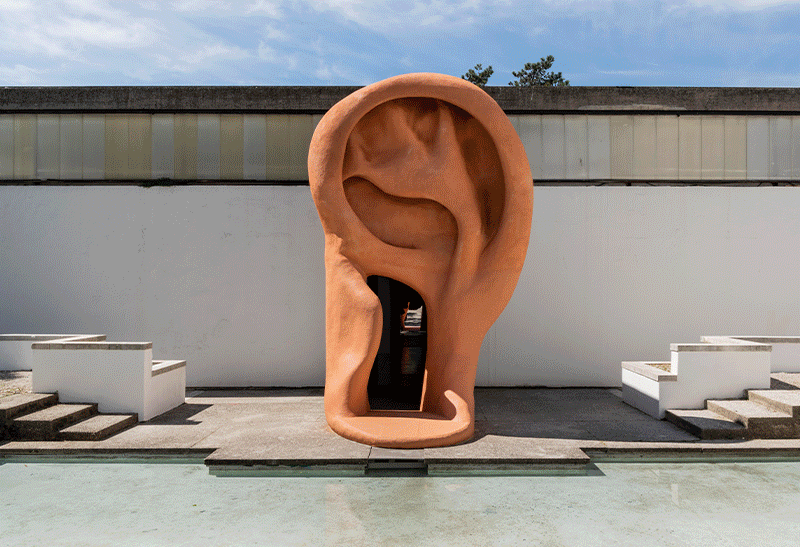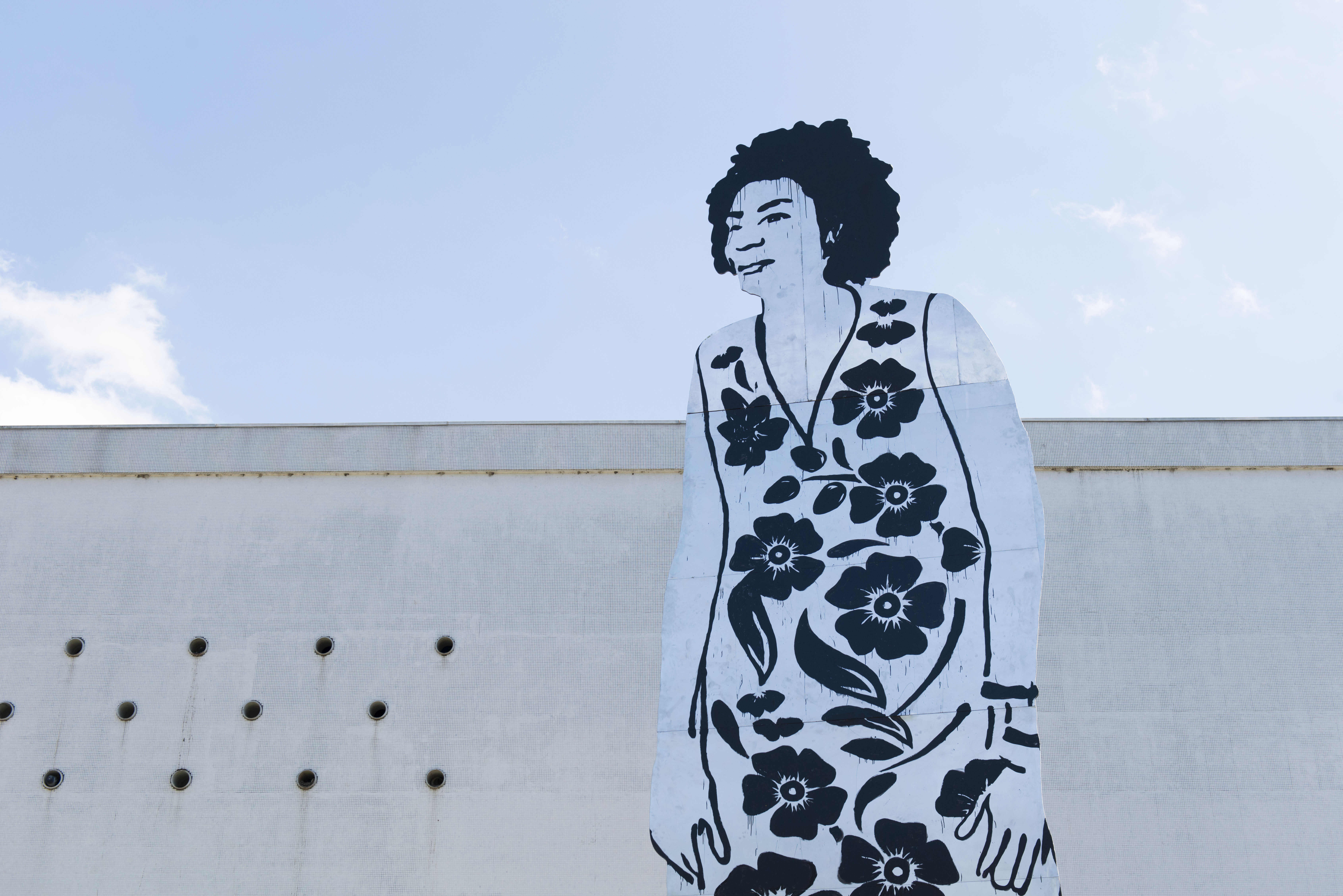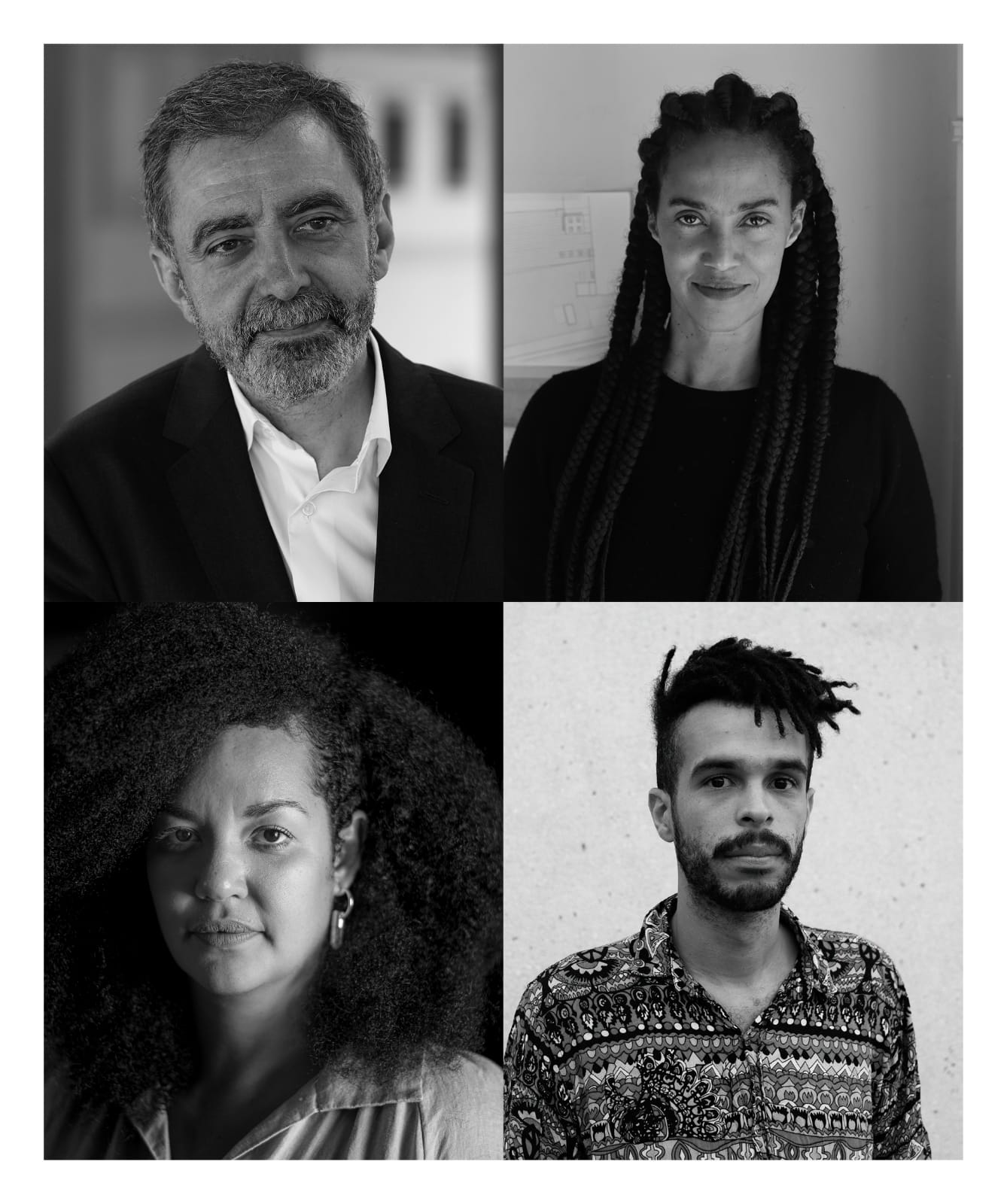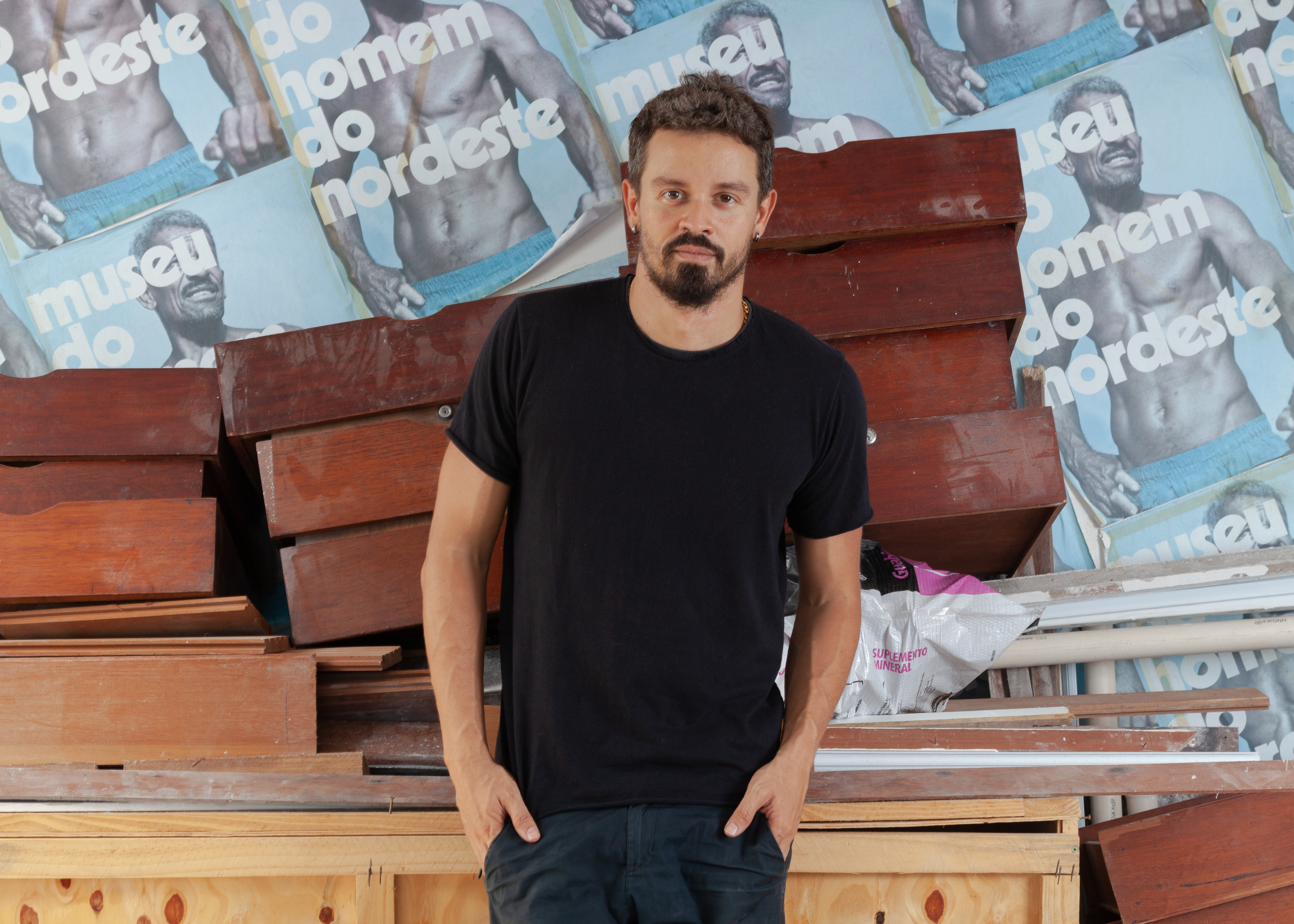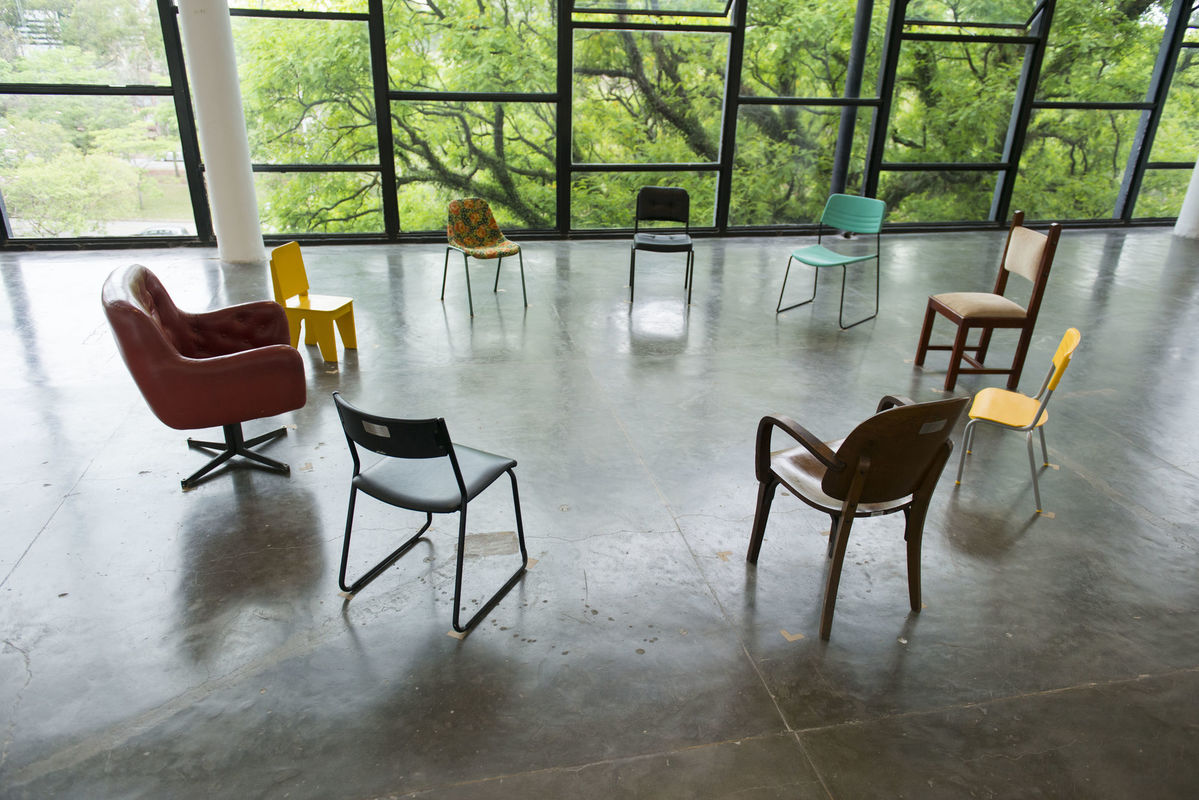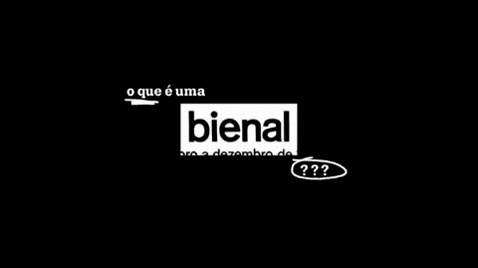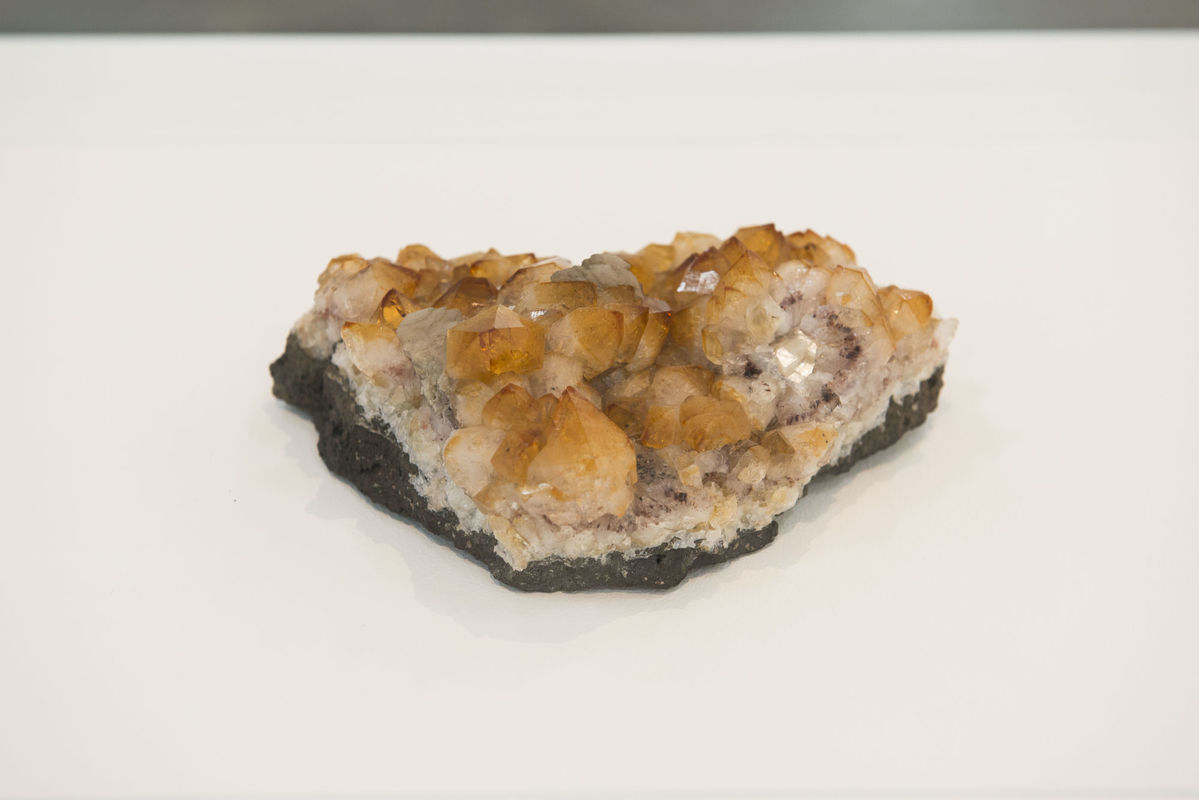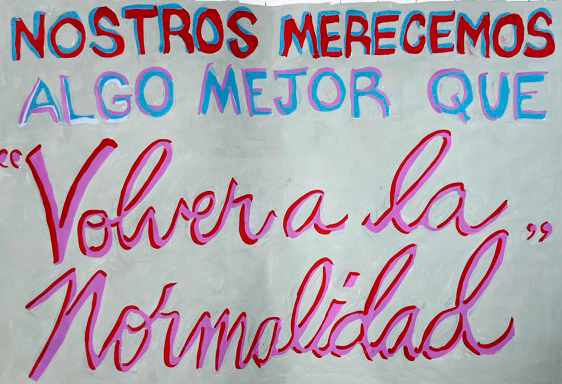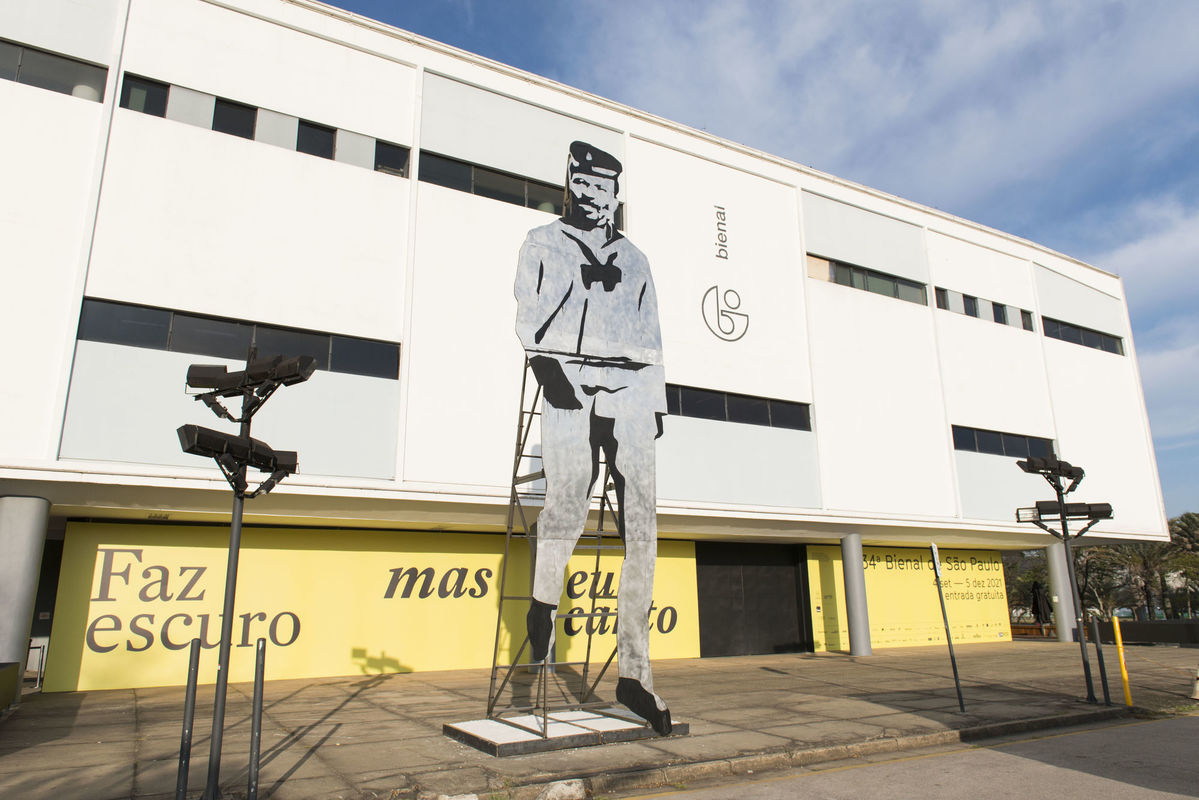
The Fundação Bienal de São Paulo announces the opening of the 34th Bienal de São Paulo – Faz escuro mas eu canto this Saturday, September 4, at 10 a.m. Extended for one year, due to the COVID-19 pandemic, the show that is opening now has been readjusted to the times of pandemic, with strict protocols defined together with Hospital 9 de Julho, and a food court outside the Pavilion, in an open space. The curators are Jacopo Crivelli Visconti (chief curator), Paulo Miyada (adjunct curator), and Carla Zaccagnini, Francesco Stocchi and Ruth Estévez (guest curators). Visitation will run until December 5, always with free admission.
This edition, begun in February 2020, has been unfolding in space and in time with both physical and online programming, and culminates now in the group show that occupies the entire Ciccillo Matarazzo Pavilion, concomitantly with dozens of solo shows at partner institutions in the city of São Paulo. The complete list of partner institutions in São Paulo is available here.
From 4 September, more than 1100 works will be displayed at the pavilion in Parque Ibirapuera. Among this edition’s participating artists, there are representatives from all continents. There is a balanced distribution between women and men, and 4% of the artists identify themselves as non-binary. This edition will also have the largest representation of indigenous artists, with 9 participants from original peoples of different parts of the globe (approximately 10% of the total). The complete list of participants is available here.
“Since the preliminary design for the 34th Bienal was drawn up, nearly three years ago, the dilated timeframe we had imagined for the Bienal became much more than a curatorial tool: it became part of each person’s life. And, for us, this dilated time echoed the desire to present not only the artworks and the artists, but also the process by which the exhibition was constructed. This led to the continuous and constantly reformulated effort of thinking and rethinking the exhibition publicly, ceaselessly talking about what we had planned – about what went ahead according to plan and about what became something else. Thus making it even clearer that it is not separate from the world, but a part of it,” reflects Jacopo Crivelli Visconti, curator of this Bienal.
José Olympio da Veiga Pereira, president of the Fundação Bienal de São Paulo, adds: “As one of the conceptual references of the 34th Bienal, the curatorship brought the idea of ‘relationship,’ which, roughly, is connected to how we need to completely understand the other in order for us to relate with them. Actually, the richness resides precisely in difference and diversity. The way in which more than 20 cultural institutions of São Paulo became aligned for the realization of this edition of the Bienal, finding a way to create a programming that is consistent but not homogeneous – in other words, which maintains the identity of each and, nevertheless, shares elements in common – gives rise to a very important symbolic image for us.”
Artworks beyond the pavilion
With the aim of enlarging the dialogues established between the artworks and their contexts and the possible points of contact with the public, the 34th Bienal is presenting temporary interventions outside the Bienal Pavilion, in Ibirapuera Park, by artists Clara Ianni, Eleonora Fabião, Grace Passô, Jaider Esbell, Paulo Nazareth and Oscar Tuazon. “Just as what is seen inside the pavilion reverberates exhibitions that are related with different urban contexts, various of the show’s artworks coexist with the everyday life of the park, sometimes integrated with its landscape, sometimes reflecting its role as an iconic and symbolic space,” explains Paulo Miyada, adjunct curator of this edition of the event.
The sculptures of the Growth Rings series, by United States artist Oscar Tuazon (1975, Seattle, Washington, USA), were the first outdoor artworks to be installed, at the beginning of August, when the setting up of the main exhibition was still underway. Four wooden rings were distributed at different points in the park: one of them near the Bienal Pavilion’s side ramp, where it will remain until December 5, and the others near the lake and alongside the Museu Afro Brasil, one of the partner institutions of this edition of the Bienal. The diameter of each of the rings, between 4 and 5 meters, was defined by the artist based on the distance between the trees in Ibirapuera Park he chose to support the sculptures. On August 30, the three sculptures that were near the lake were moved into the Ciccilo Matarazzo Pavilion, where they will be on display until the close of the exhibition.
The work Outdoors, consisting of a series of nine large-format sculptures by Minas Gerais artist Paulo Nazareth (many dates, Watu Nak, Vale do Rio Doce, MG), inserts into the park nine large-scale representations of people who became examples of resistance and struggle against various oppressions that have marked this country: Aqualtune, Dinalva, João Cândido, José Campos Barreto and Carlos Lamarca, Juruna, Maria Beatriz Nascimento, Marighella, Marielle Franco, and Teresa de Benguela. The sculptures were produced in wood covered with aluminum sheeting, and attached to metallic structures on concrete bases. Positioned at different points in Ibirapuera Park, near the circulation paths, the various sized pieces can reach as high as 11 meters.
The indigenous artist, writer and cultural producer from the Makuxi ethnicity Jaider Esbell (1979, Normandia, RR) presents, near the fountains in the lake, a large-scale installation composed of two inflatable objects in the shape of a snake, printed in vibrant colors and with internal lighting, measuring approximately 10 meters long each. In the indigenous shamanism, the snake is considered a “power animal” and is present as a force for cure, regeneration and transformation.
The intervention Derrubada, by Clara Ianni (1987, São Paulo, SP), consists of an installation created on the basis of the flagpoles of Bandeiras Square, adjacent to the Ciccillo Matarazzo pavilion, where the flags of countries participating the show were flown at the time when the Bienal was composed of national representations (a model extinct since the 27th edition, in 2006). For the show, the artist proposed the creation of a temporary and highly symbolic situation, through the felling of the flagpoles and the rearrangement of these objects lying on the ground, in a position perpendicular to the Bienal pavilion. The restoration and reinstallation of the flagpoles, at the end of the show, will end the movement proposed for the work.
For its part, the project by Eleonora Fabião (1968, Rio de Janeiro, RJ), titled nós aqui, entre o céu e a terra, is based on a collaboration with 26 public institutions in the city, located within a 5 km radius from the Ibirapuera Park. Between September 8 and 16, there will be a performance in which chairs from those institutions (from the sectors of health, education and culture) will be brought through the streets of the city, suspended on bamboo stalks, to the Bienal pavilion, where they will remain on display until the close of the show. The bamboo stalks used in the performance will remain buried during the months of the Bienal’s run in the park, at points determined by a graphic intervention used by the artist on an aerial photograph of Ibirapuera. At the end of the show, the chairs will be returned, but exchanged: no institution will receive its original chair.
Last but not least, Grace Passô (1980, Belo Horizonte, MG), debuting at the Bienal de São Paulo, proposes the installation of a rádio de poste [“post radio” – a communication medium consisting of content broadcast to a community by loudspeakers on posts] in the area outside the Ciccillo Matarazzo pavilion. A practice often seen in small cities, especially in Brazil’s northeast region, the rádios de poste are alternative mechanisms for the circulation of information of public interest. The programming of the radio will be conceived by the artist and can be heard both inside and outside the exhibition.
Statements
One of the central elements of the 34th Bienal de São Paulo’s curatorial conception is the existence of 14 statements, elements that possess striking stories, able to suggest readings of the works around them. The curatorship resorts to these items as a way of seeking a language able to delineate the fields of force created by the encounter of artworks produced in different places and at different times without, however, limiting the readings to specific themes or concepts. Among the statements, the visitor will find a number of very diverse material and symbolic objects.
The first statement to be found by the visitor, on the ground floor, consists of three objects belonging to the collection of the Museu Nacional, which survived the fire that destroyed it and the vast majority of its holdings. These objects are: the Santa Luzia meteorite, which, tempered by its journey through outer space and by the temperature it reached upon entering the earth’s atmosphere, remains unscathed; an amethyst (a sort of purple quartz) which, after spending a long time at a very high temperature, transformed into the color of citrine (a yellow quartz): and a ritxòkò, a doll that was donated to the Museu Nacional after the fire by Kaimote Kamayurá, of the Karajá de Hawaló village, on Bananal Island (TO), to substitute one that had been destroyed by the flames, to help reconstitute the collection. Reunited, these three objects show us how resisting can take various forms.
Another statement is composed by a series of 120 portraits of Frederick Douglass (USA, 1818 – 1895). The son of a black female slave and a man who was most likely white, but whom he never met, he is considered to be the most photographed person in the United States during the 19th century. Douglass was a public man, a journalist, writer and orator, and a key figure in the struggle for the abolition of slavery. Aware of the importance of the circulation of a positive and non stereotyped image of black people, he strove for his portraits to enter into the flow of the circulation of newspapers, as well as in private spaces around the country, and until today they circulate around the world as a symbol of justice and resistance.
Two of the other statements could be viewed by the visitors of the exhibition Wind, held on November 2020:The Bell from Ouro Preto and the Tikmũ’ũn Songs. The other 10 statements integrating the exhibition are: A ronda da morte, by Hélio Oiticica; Notebooks by Carolina Maria de Jesus; Two Embroideries by João Cândido; Letters from Joel Rufino to his son; Cut/Relation in Antonin Artaud and Édouard Glissant; The Engraved Image of Coatlicue; Paulo Freire ‒ Circles; Hiroshima mon amour by Alain Resnais; The Dedication from Constantin Brancusi; and Cerâmica Paulista.
Learn more about the statements here.
Public Program
In dialogue with the works that make up the 34th Bienal, an event schedule was created that includes musical presentations, performances, artist talks and panel discussions.
One of the main fronts for public programming is the activation of deposição, by Daniel de Paula, Marissa Lee Benedict and David Rueter: an old Chicago stock exchange trading pit was rebuilt at the center of the Bienal Pavilion and is re-signified by the artists and by its use at the Bienal. The work can be freely occupied by the public and has an activation program with 3 axes: discussions proposed by artists Vânia Medeiros and Beatriz Cruz; experimental music presentations co-produced by the Bienal and Teatro Cultura Artística, curated by Festival Novas Frequências; and open discussions from the series “As Vozes dos Artistas” [The Voices of the Artists]. These activities take place on Thursdays at 7 pm and Saturdays at 4 pm, as well as at other times, updated on the complete event program available at 34.bienal.org.br/en/agenda.
Additionally, the participation of Eleonora Fabião, Mette Edvardsen, Nina Beier, Paulo Nazareth, Roger Bernat and Trajal Harrell includes performances and activations throughout the exhibition period. The public can keep up with the program at 34.bienal.org.br/en/agenda.
Finally, the 34th Bienal also proposes the realization of Art Circles: inspired by the principles of autonomy, horizontality and dialogicality proposed by Paulo Freire, the Art Circles are conversations with the public that aim at the shared construction of meanings about the exhibited works and the possible relationships between them.Thirteen art circles, one per week, will be held around the statements that organize the exhibition. The activity takes place on Thursdays and Saturdays, at 4:00 pm, with a capacity for 10 participants.
Publications
The catalog for the 34th Bienal has 432 pages and includes texts and images on the works of the 91 artists participating in this edition and on the statements that underline the exhibition, as well as exclusive contributions by the artists and essays written by guest authors and by the curators. The guide for the 34th Bienal includes 120 pages of texts and images about the works of the participating artists and about the exhibition statements. Both of these publications also bring information on the exhibitions at the 34th Bienal’s partner institutions and can be purchased at Livraria da Travessa and at the Bienal Store, on the ground floor.Lastly, the folder-map is distributed free of charge at the information desk on the ground floor and contains the exhibition map and visitor information.
Accessible audio guide of the 34th Bienal
Narrated by Marília Gabriela, Adriana Couto, Sara Bentes and André Trigueiro, the inclusive audio guide for the 34th Bienal covers 20 artworks and objects that make up the exhibition. By following the suggested route, the visitor will be guided through every floor of the Pavilion. Each of the tracks shares stories related to the works, comments on the artists' processes and describes the pieces. Since it is an inclusive audio guide, it is also available in Brazilian Sign Language (Libras).
The content (in Portuguese only) can be accessed on our website at 34.bienal.org.br/audioguia or through the QR Codes available on the exhibition labels of the selected works. The project is a joint venture between Fundação Bienal São Paulo and Goethe-Institut.
Guided Visits
On our guided visits, a Bienal professional builds, together with visitors, a conversation based on works from the exhibition, in an exchange of knowledge and impressions. Guided tours take place in many ways: by group booking; spontaneously at available times, or by initiative of the visitors themselves, who may reach out to mediators in mediation spaces.
Accessibility and inclusion
In addition to the inclusive guided tours and the inclusive 34th Bienal audioguide, there are other inclusion initiatives, all planned with the support of the accessibility consultancy Mais Diferenças. Learn more about the accessibility measures implemented by Fundação Bienal here.
The 70 years of Bienal de São Paulo
Beyond the opening of the main exhibition of the 34th Bienal de São Paulo, the year 2021 is also an important date for marking the 70th anniversary of the 1st Bienal de São Paulo (1951). “Throughout the last 70 years, the various editions of the Bienal de São Paulo have adapted to the times, and it is precisely its ability to change, coupled with its opening to the new, which has allowed the show to conserve its artistic and cultural relevance. The 34th Bienal de São Paulo in some way symbolizes this: faced with challenging times, we have found ways to remain faithful to the proposal of this edition without, however, being bound to ideas and projects that have lost their pertinence in the new global context. Last year, we intensified our digital programming and discovered new ways to connect with the public, which we plan to continue in the next editions. In May, the launching of the digital catalog of the 34th Bienal, tenteio, is, without a doubt, one of the initiatives that were not foreseen in the initial plans, but which is in total consonance with them, while also expanding their reach,” says José Olympio da Veiga Pereira, president of the Fundação Bienal de São Paulo.
To celebrate the occasion, the Fundação Bienal has released a series of commemorative products, which can be found here (Portuguese only): the podcast Bienal, 70 anos, a co-production by the Fundação Bienal de São Paulo and UOL; the short film Arquivo Histórico Wanda Svevo: o passado em perpétua construção [Arquivo Histórico Wanda Svevo: The Past in Perpetual Construction] and the re-edition of Linha do tempo da Bienal de São Paulo [Timeline of the Bienal de São Paulo]. The commemorations of the 70 years of the Bienal de São Paulo will last until 2022, with the planned release of two more initiatives: a book of new commissioned essays edited by Paulo Miyada, and a mid-length documentary about the history of the show, directed by Carlos Nader and produced in partnership with Itaú Cultural.
34ª Bienal de São Paulo – Though it's dark, stil I sing 4 September to 5 December 2021
Tue, Wed, Fri, Sun and bank holidays: 10am-7pm (last entry 6:30pm)
Thu, Sat: 10am - 9pm (last entry 8:30pm)
closed on Mondays
free entrance
access upon presentation of proof of Covid-19 vaccination, either printed or online
Pavilhão Ciccillo Matarazzo, Parque Ibirapuera
34.bienal.org.br
Press preview: 2 September 2021
Preview for press, professionals and guests: 3 September 2021
Press releases and images for download: bienal.org.br/press34
Press information
Conteúdo Comunicação
Mariana Ribeiro
mariana.ribeiro@conteudonet.com
(55) 11. 5056-9812 / (55) 11. 99328-1101
Roberta Montanari
roberta.montanari@conteudonet.com
(55) 11.5056-9809 / (55) 11.99967-3292
Carolina Novaes
carolina.novaes@conteudonet.com
(55) 11. 98267-3418
Mariana Campos
mariana.campos@conteudonet.com
(55) 11. 97416-5894
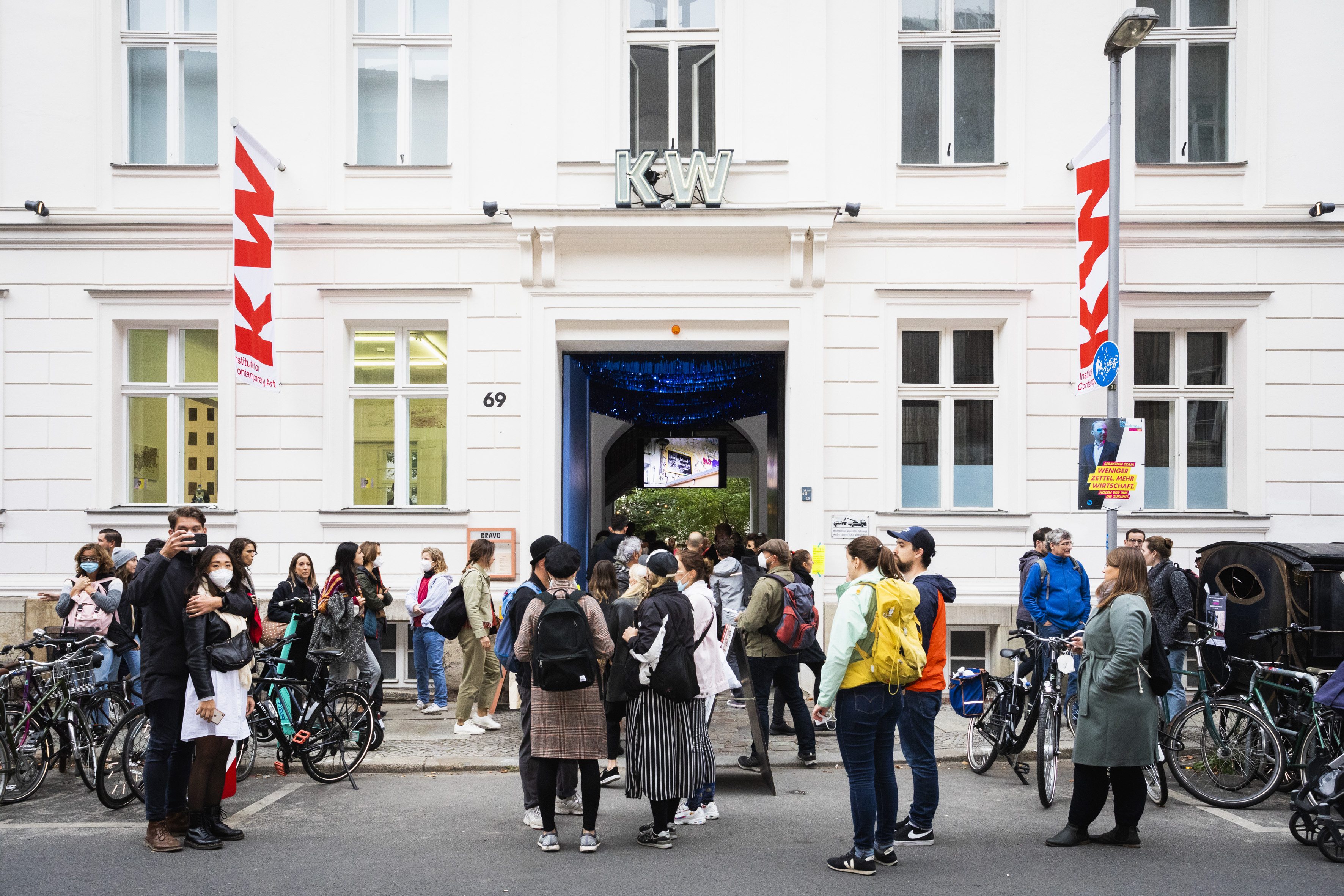

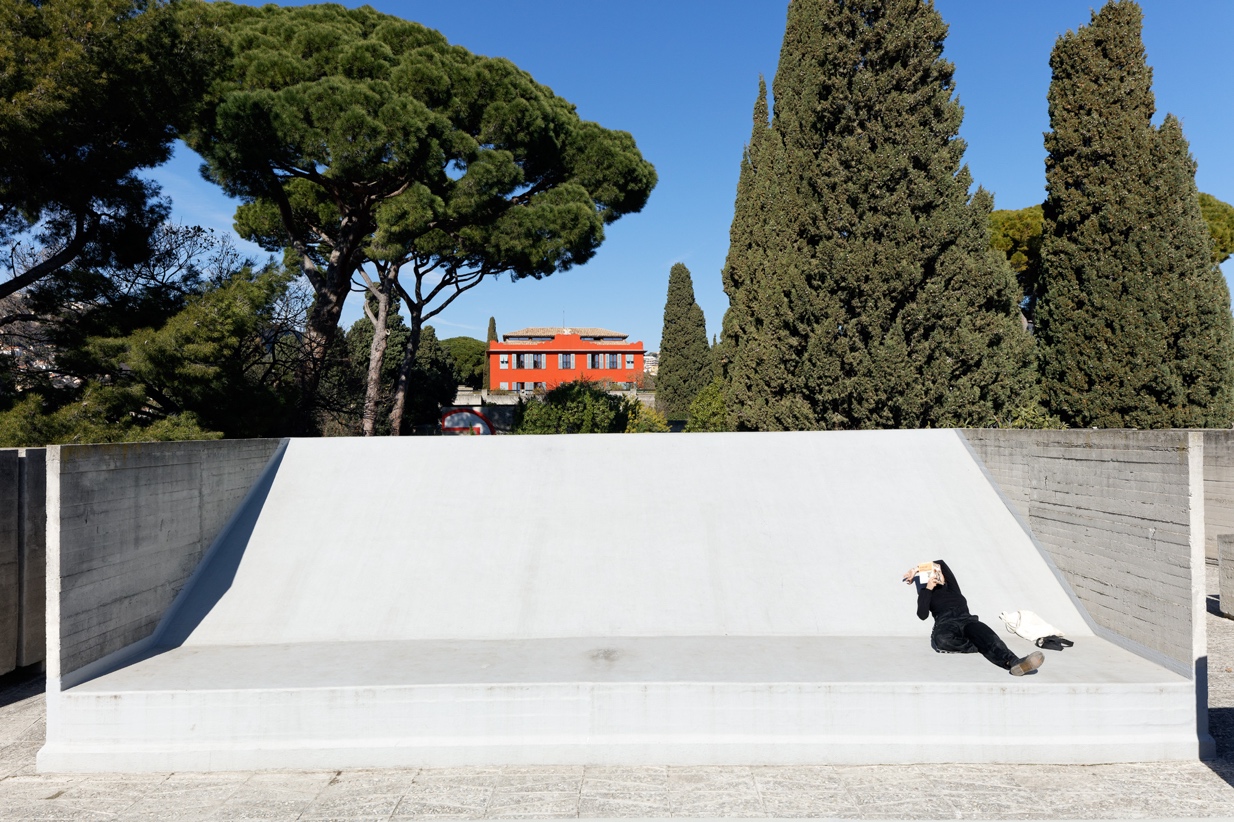
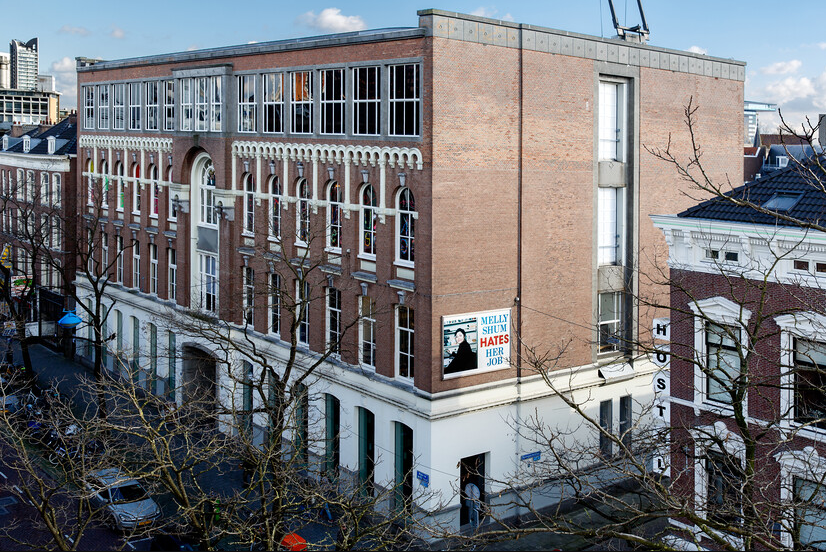

![View of the sculpture of the series Corte Seco [Dry cut] (2021), by Paulo Nazareth during the 34th Bienal de São Paulo. Commissioned by Fundação Bienal de São Paulo for the 34th Bienal de São Paulo](http://imgs.fbsp.org.br/files/81b3a05327e8559c64fc5cda09f3e1f8.jpg)
